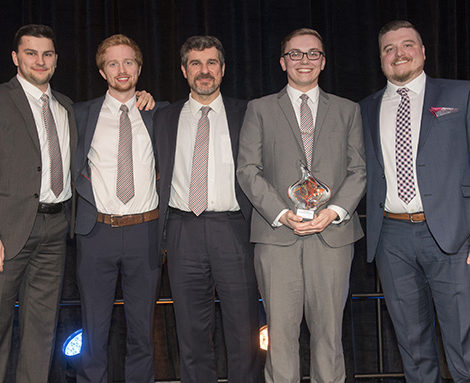- 14 décembre, 2010
- Percée
- Comments : 0
Researcher takes up cancer battle
By Julianna Cummins – Telegraph Journal | link to original article
Dr. Anirban Ghosh is exploring how the abnormal presence of a molecule usually found in human hair and nails could potentially contribute to the development of a cancer of the blood.
« The two ends – we got it. Now we need the middle part, to figure out how, » said Ghosh.
Hailing from the Cross Cancer Institute at the University of Alberta, Ghosh came to New Brunswick thanks to $30,000 of start-up grant funding from the New Brunswick Foundation for Innovation (NBIF) to continue his research at the Atlantic Cancer Research Institute in Moncton.
Ghosh’s research, started at the Cross Cancer Institute and continuing in Moncton, focuses on the abnormal splicing of genes. Some of his current research being conducted in Moncton looks at the levels of hyaluronic acid (HA) within cells, and how abnormal levels of HA and the enzymes that make them may be mechanisms in the development of cancer.
HA is a long-chain super molecule found throughout the body, said Ghosh. However, the molecule usually manifests itself outside of cells, such as in human hair or nails. To this point, most research of HA has focused on its behaviour outside cells, said Ghosh.
Ghosh’s research, however, has shown that if HA is produced at abnormal levels inside a cell, it can destroy a specific pattern of normal cell division.
« Cancer, by definition, is abnormal cell division, which goes with an abnormal number of chromosomes, » said Ghosh. He said his research has shown that the presence of abnormal levels of HA within patient’s cells can change the number of chromosomes inside the cell to be more or less than the normal 23 pairs of chromosomes. This mean that the increased level of HA within the cell can make it look like cancer, said Ghosh.
In addition, Ghosh said his research shows that HA can also enable cancer cells to create more diversified cellular clones.
Gosh’s research has identified these patterns specifically for blood cancers, particularly multiple myeloma. There is no long-term treatment for multiple myeloma, and all of the patients afflicted with the disease eventually die.
If science can detect the abnormal levels of HA early, said Ghosh, there may be a way to stop the cancerous cells from developing.
With the funding from NBIF, Ghosh said he is conducting research to better pinpoint how HA may actually cause blood cancers like multiple myeloma.
To further this research, he is inserting enzymes into cells that can create abnormal levels of HA, and then monitoring the cell’s behaviour. Ghosh said he has already observed that the cells with the abnormal enzymes and levels of HA resemble cancer cells.
The research conducted by Ghosh is important, as it can reveal to researchers at least one mechanism that could contribute to cancer, said Linda Pilarksi, a senior scientist at the Cross Cancer Institute who worked with Ghosh while he was in Alberta.
Pilarksi also spoke to Ghosh’s skill as a biochemist, and the research he has is continuing to conduct into the relationship between gene interaction and cancer. Separately, two genes important in the study of cancer are not necessarily harmful. But when abnormalities in these genes manifest, they appear to promote cancer within the body.
« If you can stop the activity of two genes that are co-operating with each other by targeting something that they both need, you might be able to therefore benefit the patient and hinder the tumour, which really is what treatment is all about, » said Pilarski.

